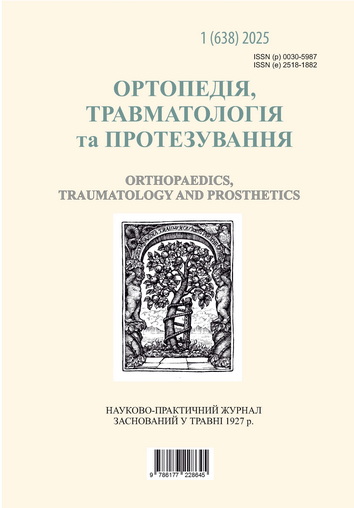Remote infrared thermography in the system of comprehensive diagnostics of the health of military personnel before surgical intervention
DOI:
https://doi.org/10.15674/0030-5987202515-12Keywords:
Infrared thermography, military personnel, oscillographic thermal image, gradient, temperatureAbstract
A complete and informative diagnosis of the general health of military personnel before surgical intervention is of great importance for its successful implementation. A simple and affordable diagnostic method of radiological diagnostics is the method of remote infrared thermography. Conducting a comprehensive thermographic examination of military personnel before surgical intervention allows for the treatment of those pathological conditions that were detected during the thermographic examination. Objective. To show the possibility and evaluate the diagnostic informativeness remote infrared thermography in the system of comprehensive diagnostic monitoring of the health of military personnel before surgical intervention; to obtain thermographic visualizations of detected pathological changes associated with participation in combat operations. Methods. The work used a domestic thermograph with a temperature sensitivity of 0.07 °C and a ThermaCAM thermograph E 300 FLIR SYSTEM. Observation and control of thermal fields were carried out in the ranges of 3÷5 μm and 8÷14 μm. The examination was carried out during inpatient and outpatient treatment. Results. Received thermographic visualizations detected pathologies: disorders functions breathing; thermal asymmetries zones projections lung because of COVID-19; complications after firearm injury — pneumothorax; zones hyperthermia temporal bones due to contusion; vascular pattern disorders in the thyroid gland; functional and chronic disorders organs gastrointestinal and urological pathologies; degenerativedystrophic musculoskeletal changes The oscillographic distributions of temperature patterns of the detected pathological conditions, which characterize the severity of traumatic and degenerative-dystrophic changes, were studied. Conclusions. In the presented work for the first time obtained and the results of a comprehensive thermographic health check-up military personnel after a long stay in the combat zone and before operational Remote infrared thermography, as one of the methods of radiological diagnostics, allows for a comprehensive examination of a significant number of military personnel in a short period of time and to identify pathological changes that require additional examination by narrowly specialized specialists.
Downloads
How to Cite
Issue
Section
License
Copyright (c) 2025 Oleksandr Kostrub, Oleksandr Shukalo, Vadim Dunaevsky, Vitaliy Kotovsky, Volodymyr Tymofeiev, Svitlana Nazarchuk

This work is licensed under a Creative Commons Attribution 4.0 International License.
The authors retain the right of authorship of their manuscript and pass the journal the right of the first publication of this article, which automatically become available from the date of publication under the terms of Creative Commons Attribution License, which allows others to freely distribute the published manuscript with mandatory linking to authors of the original research and the first publication of this one in this journal.
Authors have the right to enter into a separate supplemental agreement on the additional non-exclusive distribution of manuscript in the form in which it was published by the journal (i.e. to put work in electronic storage of an institution or publish as a part of the book) while maintaining the reference to the first publication of the manuscript in this journal.
The editorial policy of the journal allows authors and encourages manuscript accommodation online (i.e. in storage of an institution or on the personal websites) as before submission of the manuscript to the editorial office, and during its editorial processing because it contributes to productive scientific discussion and positively affects the efficiency and dynamics of the published manuscript citation (see The Effect of Open Access).














